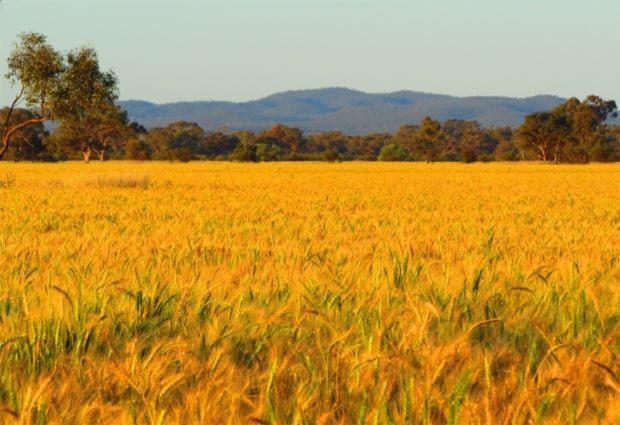
20 Feb To Buy or Lease land?
To Buy or Lease Land?
Expansion, Expansion, Expansion! Taxable profits are up, equity positions are improving and agriculture as an industry is looking good.
A land grab is on and from a helicopter view it takes many forms. But what is the best way to expand a farmgate agricultural business.
I have tabulated some arguments both for and against two of the most common forms of expansion: direct purchase vs leasing. My matrix covers cost of expansion, duration, investment type, contractual obligations, operational management, capital investment, wealth creation, banking ratios, capital accessibility and fixed overhead capability. We hope this will trigger deeper thought processes and we are looking forward to a healthy discussion around such debatable topic.
| Purchase Land | Lease Land | Considerations | |
| Cost of Expansion | All Up cost circa 3.3% to 4.6% p.a. to borrow from a primary lender on variable rates. Add around 0.30% to 0.60% for various fixed rates. | Circa 3.5% to 4.5% p.a. of Current Market Value. Fixed rate or indexed to inflation. | Cost of purchasing is similar the cost of leasing (excluding transactional costs). Purchasing does not take into consideration of future interest rate movements. |
| Duration | Enduring. | Fixed lease to contractual maturity | For leasing, cash flow benefit is only limited to the duration of the lease. This maturity profile could distort the efficient investment profile of a business with regards to debt levels, human capital and equipment investment when a lease matures (ie excess investment and spare capacity within these categories). |
| Investment Type | Property Investment. Owner has the capacity to earn both market rent return + capital growth. | Cash flow Investment. Economic revenue from operating a farm gate enterprise must exceed cost of lease for financial viability. | A true measure of return by expanding a business via land acquisition is the Operational return less the (opportunity) cost. For land purchase, the return is hence measured as operational profit of ownership less the market rate for leasing the property. |
| Contractual Obligations | Only limited to local, state and Federal legislation. | Local, state and federal legislation plus vendor’s demands as noted within the lease agreement. | Many measures of leasing obligations are subjective and can potentially create contractual issues both during and post maturity of lease. |
| Operational Management | Direct ownership will be dictated by long term sustainable farming and grazing practises. | Leasing activity will be motivated by application of enterprises that maximise cash return at the prospective expense of long term sustainable farming practises. | As guardians of the land asset, the different structures pose different motivational activities for the operators. |
| Capital Investment | The motivation to invest capital into infrastructure and / or soil nutrition will be evident as the return on investment will be captured by the land owners at any given time in the future. | Capital investment will be economically kept to a minimum to maximise cash flow and enterprise return. | An asset under a continual lease arrangement could potentially be prone to under investment by the operator unless the vendor can justify a measurable return on investment. |
| Wealth Creation | Wealth creation has the capability of been positively compounded by natural appreciation of the asset (but not guaranteed). | Wealth creation is limited to the positive cash flow of the enterprise by which it is reinvested into a value-added investment vehicle. | Property purchase is a natural inflation hedge for preservation of capital value. |
| Banking Ratios
|
Funding 100% of land acquisition by debt reduces balance sheet equity. Interest Cover Ratios and Debt Servicing Commitment Ratios will need to be analysed to see if acquisition places the business under unacceptable increased funding risk in the future. | Leasing land only impacts profit and loss. It is a cash flow play and assuming the commitment was made because it would improve the P&L, then banking ratios would, in theory, with all else being equal, improve. It is common though that leasing land is synonymous with further debt requirements for working capital which will need to be factored in. | A deeper analysis will need to be applied to truly understand the technical impact land acquisition or land leasing places the business under. |
| Capital Accessibility | Borrowing capital for land acquisition can place additional pressure on funding ratios which may limit future funding fire-power should the business require it. | Leasing land can potentially maintain an increased capability for borrowing capacity to further expand the business which, under the right circumstances, can yield a much higher return than land acquisition. | These scenarios must be measured on a case by case basis. |
| Fixed Overhead Flexibility | Land rates, interest rate expense relating to acquisition debt can be removed with the consolidation of the asset if required. | Contractual obligation to meet lease commitments regardless of changing circumstances which can have durations > 12 months. | Although land ownership is not a liquid asset, it does provide an argument that fixed overheads are variable overheads given that the asset can be potentially consolidated within a 12-month period if required. |



Sorry, the comment form is closed at this time.